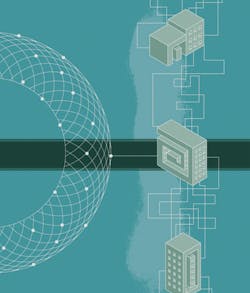These are typically built up of disparate components ranging from servo motors to purpose-built assembly stations to machining centers and everything in between. Orchestrating dozens or hundreds of components from a range of suppliers usually takes a combination of intense engineering and brute-force controller strategies.Case in point: T&L Automatics Inc., Rochester, N.Y., a global supplier of precision machined metal parts to automotive, aerospace and defense manufacturers. Particularly on the automotive side, production has to be both high throughput and high precision. T&L had a seven-station index machining center that had originally been fitted with a conventional computer numerical control (CNC) controller. Mechanically, the station was sound, but its controller and wiring were proving problematic. With part quantities upwards of 800,000 per year, any machine issue was potentially a serious one.“We had significant downtime—on average, once a week,” says Tom Hassett, president of T&L Automatics. The reason? Every component in the transfer machine was individually wired to the controller. “Every wire was a home run,” he says, “so vibration, wear and oxidation was constantly causing opens and shorts.”The solution was to retrofit the systems using four CC-Link-compliant Mitsubishi Q-series machine controllers. CC-Link is a wired controller environment first pioneered by Mitsubishi Electric Corp., Nagoya, Japan, and now available as a standard adopted by a broad range of controller and equipment makers, largely those found in manufacturing in Southeast Asia, China and Japan. It has gained a toehold in the United States, first with subsidiaries of, and suppliers to, Pacific Rim companies, then for a growing number of applications that call for high- and ultra-high speed and precision.Wire killing
In T&L’s case, a primary draw was the elimination of wiring. This was made possible by CC-Link’s capability to combine control transmission to several machines in a single cable. “We found we couldn’t use wireless,” Hassett explains. “There’s just too much electrical and RF noise in our facility. So, we set out to reduce the amount of wiring we did need.”“We were able to eliminate more than 25,000 feet of wiring per machine,” Hassett says. “And we gained important external monitoring through the new Mitsubishi controllers. We can monitor every fault on the machines, with automatic e-mails to maintenance to pick off the low-hanging fruit and fix things. Previously, the system failures were 70 percent to 80 percent electronics-based. Now, we’ve been running for a year and a half without a single electrical or electronic failure.”The retrofit was overseen by Unique Automation LLC, Palmyra, N.Y., implementing software specifications developed both by T&L and Unique Automation.Feature Article - Talking Down to MachinesTo read the feature article relating to this story, go towww.automationworld.com/feature-5145
In T&L’s case, a primary draw was the elimination of wiring. This was made possible by CC-Link’s capability to combine control transmission to several machines in a single cable. “We found we couldn’t use wireless,” Hassett explains. “There’s just too much electrical and RF noise in our facility. So, we set out to reduce the amount of wiring we did need.”“We were able to eliminate more than 25,000 feet of wiring per machine,” Hassett says. “And we gained important external monitoring through the new Mitsubishi controllers. We can monitor every fault on the machines, with automatic e-mails to maintenance to pick off the low-hanging fruit and fix things. Previously, the system failures were 70 percent to 80 percent electronics-based. Now, we’ve been running for a year and a half without a single electrical or electronic failure.”The retrofit was overseen by Unique Automation LLC, Palmyra, N.Y., implementing software specifications developed both by T&L and Unique Automation.Feature Article - Talking Down to MachinesTo read the feature article relating to this story, go towww.automationworld.com/feature-5145
About the Author
Dave Gehman
Contributing Editor
Sign up for our eNewsletters
Get the latest news and updates

Leaders relevant to this article:
